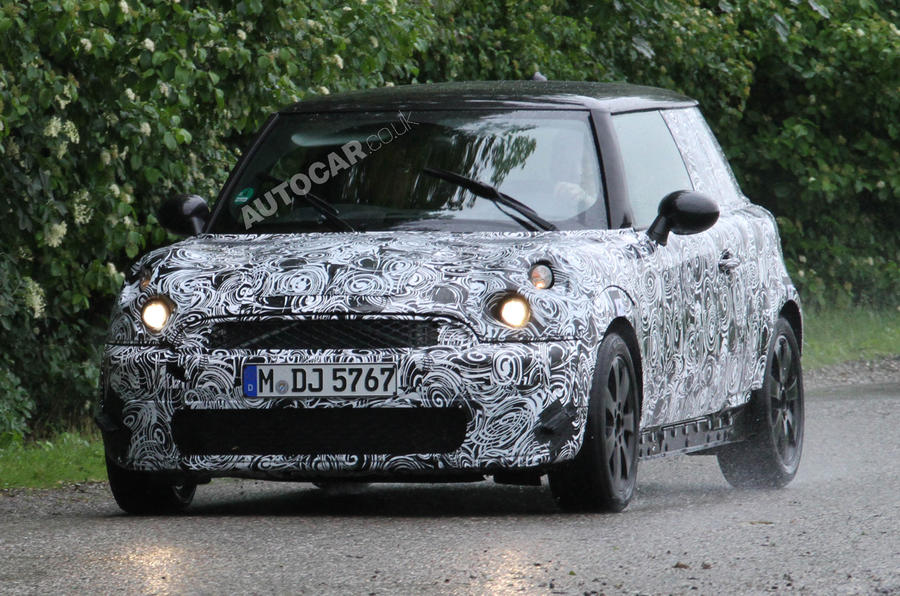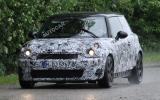BMW has begun real-world testing of its new UKL1 front-wheel drive platform. The all-new architecture will underpin the third-generation BMW Mini family (with F56, the standard three-door hatchback, expected to be shown late next year) as well as providing the basis for a range of small front-wheel-drive BMW models.
This prototype is using the new platform and running gear, but wearing a stretched Mini body. Inside, BMW engineers have rigged up a BMW dashboard to work with the new electrical architecture.
It’s widely expected that there could eventually be up to 20 individual BMW and Mini-badged models, including small roadsters.
The platform will use MacPherson struts up front and BMW’s signature Z-axle at the rear. Four-wheel drive will also be offered, opening the way for a small BMW SUV slightly larger than today’s Mini Countryman.
BMW CEO Norbert Reithofer announced the plans for a range of front-drive cars at the firm’s annual results press conference in March 2010. He said the new platform would allow BMW to “achieve its profitability aims in the small-car sector”.
Klaus Draeger, head of development, said BMW could eventually build between 600,000 and 800,000 front-drive cars annually without co-operating with another brand.
Reithofer estimated that the premium small car market would grow annually by four to six per cent every year until 2020. The company is also estimating that, by 2020, the average CO2 emissions of its entire new car fleet will be just 117g/km, a figure driven down by the new range of baby BMW and Mini models.
Hilton Holloway

















Add your comment